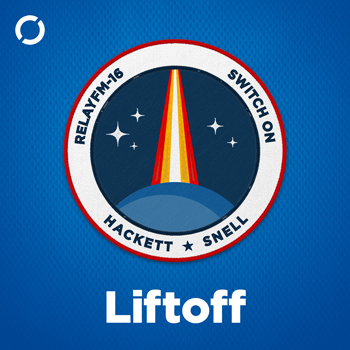Latest Episodes
#141: Apollo 14
January 26th, 2021 · 60 minutes
Less than a year after the disastrous Apollo 13 mission, the program returned to flight when Alan Shepard, Stuart Roosa and Edgar Mitchell landed on the moon in February, 1971.
#140: The End of the Year Means Next Year
January 12th, 2021 · 48 minutes
Jason and Stephen start 2021 by picking some things they are looking forward to in what promises to be a very busy year in space.
#139: Space Omelets
December 15th, 2020 · 50 minutes
You get a sample return; you get a sample return; you get a sample return!
In other news: SN8 had a rough landing, SpaceIL is getting back on the horse and NASA has unveiled more Artemis plans.
#138: A Great Acronym, but it's in Russian
December 1st, 2020 · 33 minutes
The world is mourning the uncontrolled collapse of the Arecibo observatory, even as China's Chang’e-5 mission is underway to return lunar samples to Earth, which would be a first since the final Apollo mission.
#137: Delicate Dance of Docking
November 17th, 2020 · 40 minutes
Commercial Crew has gotten official with the launch of Crew-1 over the weekend, the start of a six-month expedition on the International Space Station. That and the possibilities of Jim Bridenstine's future. Oh, and kilonovas!
#136: Don’t Tell the Boss
November 3rd, 2020 · 59 minutes
Zac Hall joins Jason to discuss the post-election future of NASA (and administrator Jim Bridenstine), the 20th anniversary of permanent habitation of the International Space Station, a bunch of moon news, and OSIRIS-REx taking a bite out of Bennu.
#135: Space is Full of Rocks
October 20th, 2020 · 36 minutes
Stephen comes with good news about InSight's Mole, and Jason says there probably aren't aliens on Venus. Also: OSIRIS-REx is due for a big day and the space industry in China is heating up.
#134: My Response to Existential Terror, with Dr. Katie Mack
October 6th, 2020 · 45 minutes
Jason and Stephen are joined by Dr. Katie Mack to discuss her book The End of Everything: (Astrophysically Speaking).
#133: The World’s Most Expensive WeWork
September 22nd, 2020 · 60 minutes
The recent announcement of phosphine being detected in Venus' atmosphere could have a major effect on future scientific missions, so Jason is excited about space blimps again. Then, Stephen walks through NASA's most recent Artemis roadmap.
#132: In the Shadow of Artemis
September 8th, 2020 · 50 minutes
In the Utah desert, Northrop Grumman has tested a full-sized SLS SRB, while the future of work in low-Earth orbit is being debated. On Mars, InSight's troubles continue and 17 billion light years-away, two black holes have collided.

